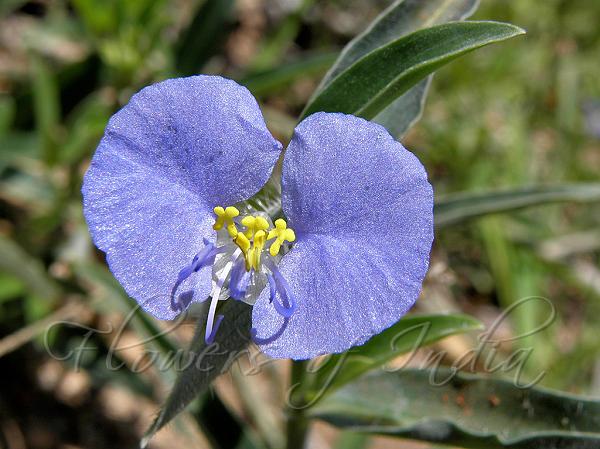|
| Scurvy Grass |
|

|

| File size | 315909 |
| Original date | 9/9/09 12:20 AM |
| Resolution | 1024 x 768 |
| Flash | Flash did not fire, auto |
| Focal length | 9.22mm |
| Exposure time | 1/320s |
| Aperture | 5.6 |
| Focus Distance | |
| Metering Mode | Multi-segment |
| Camera make | OLYMPUS IMAGING CORP. |
| Camera model | SP590UZ |
| Sensor type |
|
|
|
|
Photo: |
Botanical name: Commelina ensifolia Family: Commelinaceae (Dayflower family)
Synonyms: Commelina lunata, Commelina undulata var. setosa
Synonyms: Commelina lunata, Commelina undulata var. setosa
Scurvy Grass is a trailing herb with stems prostrate,
producing roots at the nodes. The plant has been eaten as a green
vegetable by Aboriginals in Australia. European settlers also ate the
plant to prevent scurvy, giving rise the common name of scurvy grass.
Stems are longitudinally ribbed and clothed in pale hairs. Leaves are
semi-fleshy. Leaf blades 4.5-10 cm long, 1-3 cm broad, free leaf-stalk
nil, sheathing leaf-stalk about 1.5 cm long. Leaves are clothed in pale
hairs. Flowers emerge from a broad cup-like bract 10-15 x 20-26 mm,
clothed in hairs. Flower-cluster-stalk is about 1.2 cm long.
Flower-stalk about 5 mm long. Flowers are about 2 cm diam. Outer tepals
are translucent, dimorphic 5-6 x 4-6 mm or 3 x 2 mm. Inner tepals
dimorphic 9-10 x 11-12 mm, deep blue in color 3-4 x 3 mm and white or
translucent. Stamens are dimorphic, anthers about 2 mm long on
filaments about 4 mm long and versatile or anthers about 2.5 mm long on
filaments about 3 mm long and not versatile. Style is 4.5-5 mm long,
curved like a fish-hook. fruit enclosed in a large bract. Scurvy Grass
is found in Australia, South India, and Sri Lanka.
| Identification credit: P.S. Sivaprasad | Photographed in Chinnar Wildlife Sanctuary, Idukki distt., Kerala. |
• Is this flower misidentified? If yes,